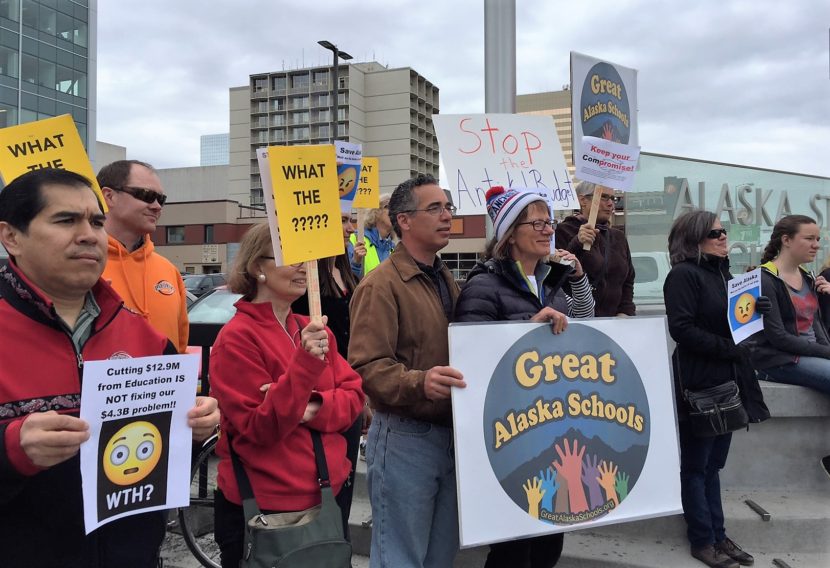
Gov. Bill Walker’s vetoes fall heavily on K-12 education, which would lose $58 million.
“We wanted to impact public education as little as possible, but there had to be some modification,” he said.
The largest share of that cut is to the account the state uses to partially reimburse local governments for school bonds. Walker, a former mayor and city councilman, says he’s well aware his decision just takes that burden off the state.
“It does shift it to the local communities, and we feel badly about that. This shifts it – I mean everybody is going to be impacted in some way,” he said.
He has also cut $10 million from rural school construction.
Caroline Storm, an Anchorage architect and the mom of a sixth-grader, says she hardly has words to describe her reaction to the school cuts.
“Mind-blowingly disappointed,” she said.
Storm is a member of Great Alaska Schools, which has lobbied the legislature to maintain education funding.
“We’ve been going to Juneau, we’ve been advocating, we’ve been pleading, we’ve been begging,” she said. “I’ve talked to the governor myself, several times, personally. I have accosted him on the jet-way of planes, to ask him not to do precisely what he just did.”
To Storm, the most painful part of the education veto is a smaller line item: A reduction of $6.3 million from the state’s per-student formula funding. Storm says that will mean a loss of dozens of teachers and directly affect the classroom. Still, she doesn’t blame Walker.
“He was absolutely forced into all of these cuts,” she said.
Storm blames the legislature. She says lawmakers played partisan politics and did almost nothing to solve the state’s budget crisis.
The governor also vetoed $10 million from the University of Alaska and held back $80 million from the Higher Education Fund, which pays performance scholarships.
The Anchorage School District says its share of the education cuts comes to more than $16 million, mostly from lost debt reimbursement.